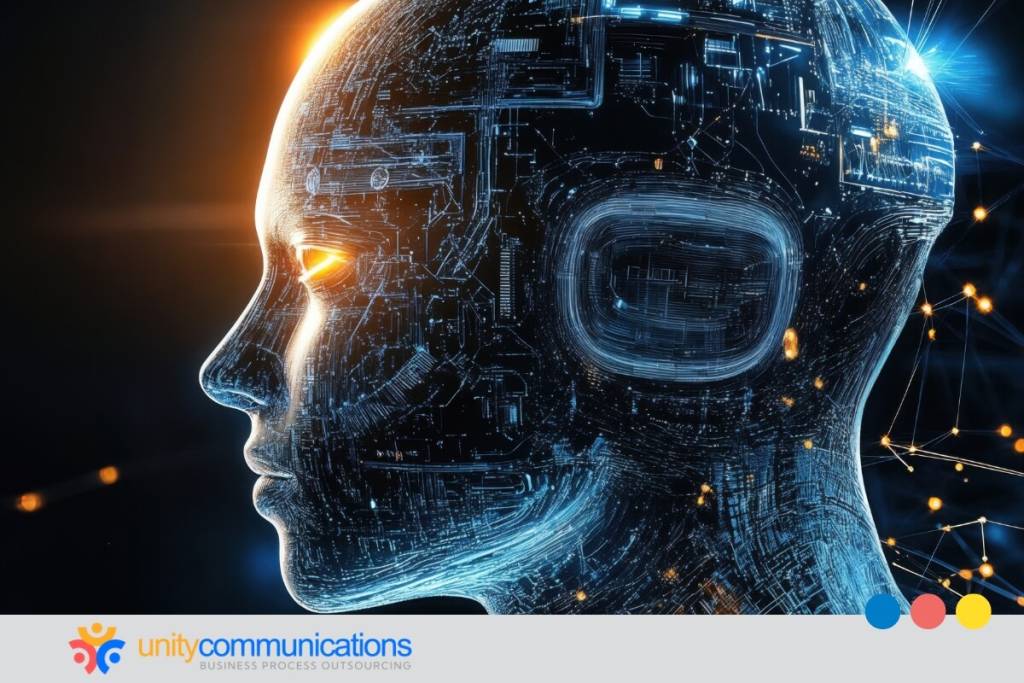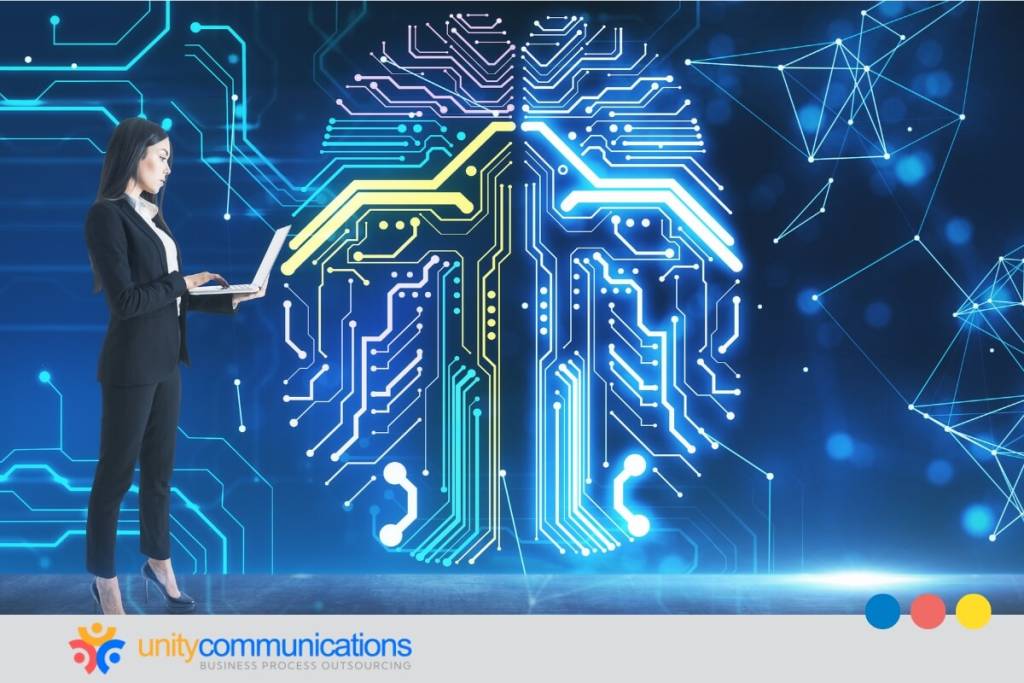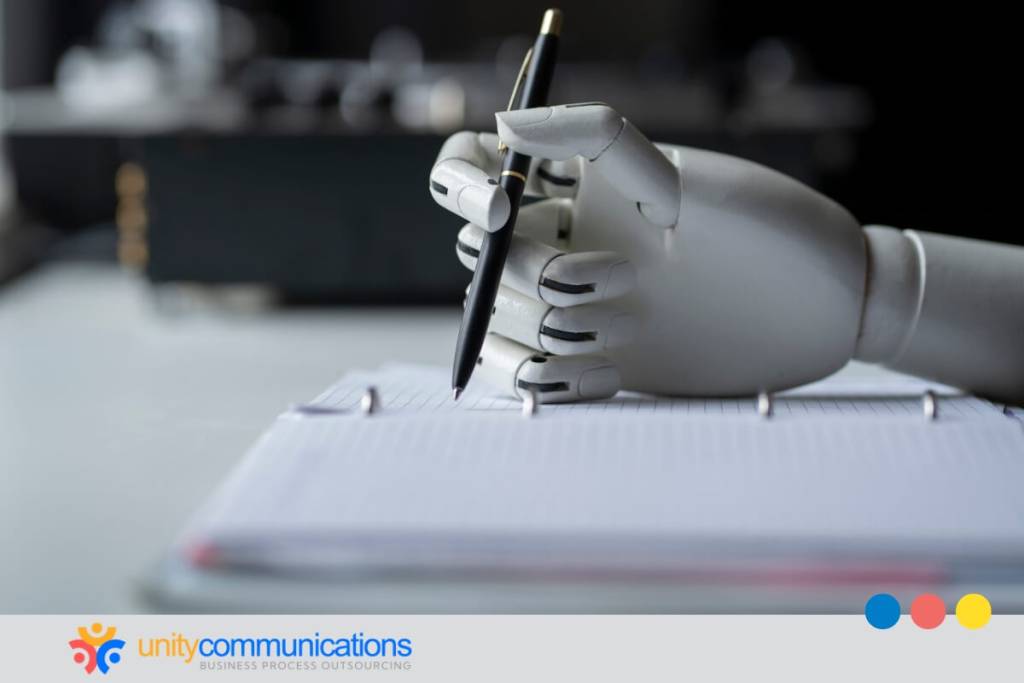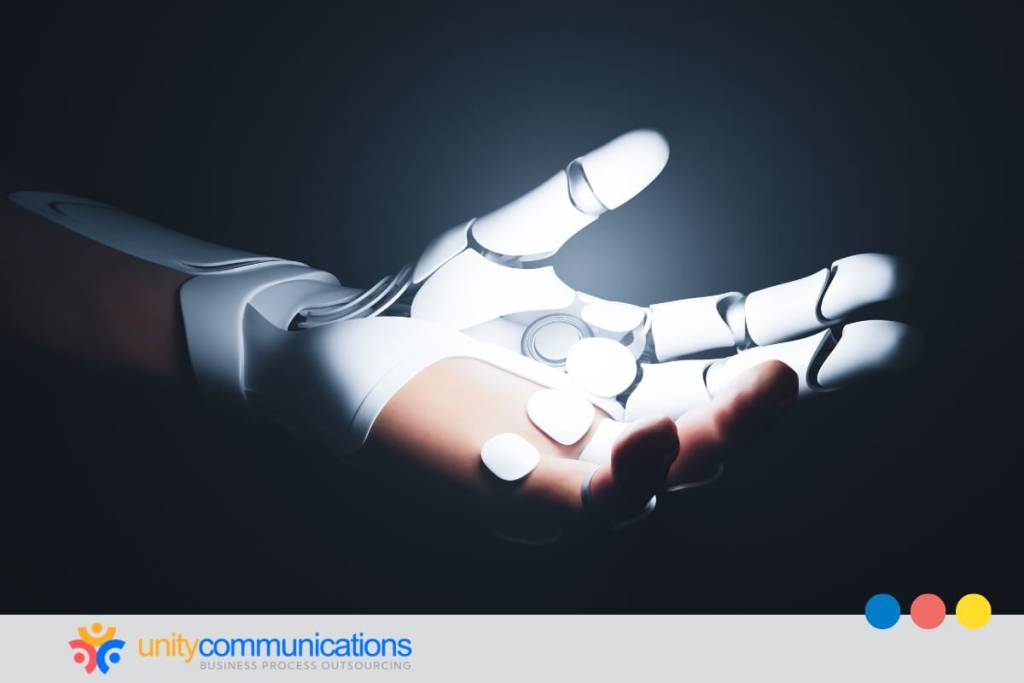Table of Contents
Artificial intelligence (AI) has advanced rapidly, but many people still confuse AI agents with chatbots. While both interact with users and automate tasks, they operate on very different levels of complexity and intelligence.
In this article, we’ll break down the nine key differences between AI agents and chatbots, providing a straightforward comparison that highlights where each excels and where one falls short. By the end, you’ll discover which technology aligns with your business goals and when to invest in each solution.
What is a chatbot?
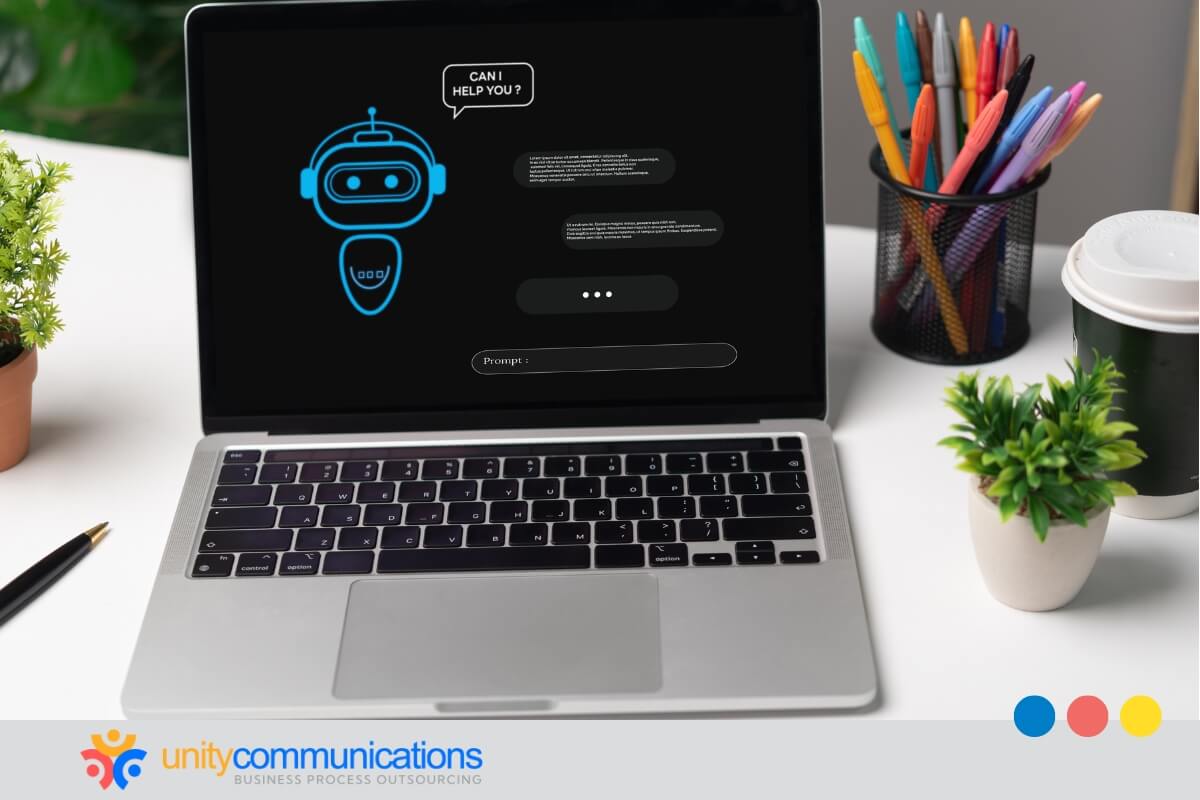
To better compare AI agents vs. chatbots, let’s start with their definitions. Chatbots are software applications designed to simulate human-like conversation, usually through text or voice. They follow pre-set rules, scripts, or simple natural language processing (NLP) models to provide quick, automated responses.
You can think of them as digital assistants handling straightforward questions such as checking an order status, resetting a password, or providing store hours. Most chatbots work within predefined boundaries.
For example, if a customer types “What’s my balance?” a banking chatbot can retrieve and display that information instantly. However, if the customer asks a more complex or unexpected question, the chatbot might fail to respond correctly or redirect the user to a live agent.
The advantage of chatbots is in efficiency and availability. They can simultaneously respond to multiple users, reduce wait times, and free human agents from repetitive tasks. However, because their responses are limited to pre-programmed options, they don’t “think” or adapt as AI agents do.
What is an AI agent?
AI agents are more advanced systems designed to go beyond scripted responses. Unlike chatbots, AI agents can perceive their environment, analyze information, make decisions, and take action toward specific goals. They don’t just answer questions. They adapt, learn, and problem-solve.
For example, an AI agent in a customer support setting can recognize intent, pull information from multiple data sources, suggest solutions, and even automate backend processes such as updating an account or generating a support ticket. Some agents utilize planning capabilities, memory, and tool integration to perform multi-step tasks without requiring constant human intervention.
The sophistication of AI agents fuels rapid adaptation. The global AI agent market was valued at $5.4 billion in 2024, with projections indicating growth to $50.31 billion by 2030. The real advantage of AI agents is their adaptability and autonomy. They can handle complex dynamic situations, improve through continuous learning, and integrate seamlessly across functions.
Now that you know what an AI agent is, let’s discuss how it differs from chatbots.
AI agent vs. chatbot: Critical differences explained
Now that we’ve clarified the definition of AI agents and chatbots and seen how their capabilities and market potential differ, it’s easier to spot the unique strengths each brings to the table.
While both tools aim to improve efficiency and user experience, their approaches and limitations set them apart. The nine differences between AI agents and chatbots will help you determine which solution best fits your operational needs and strategic goals.
1. Conversational focus vs. autonomous execution
The fundamental difference between AI agents and chatbots lies in their operational approach and scope of action:
- Chatbots are built primarily for conversation. They respond to user inputs within predefined rules or scripts, focusing on answering questions, retrieving simple data, or guiding users through structured workflows. Their role is reactive and limited to the boundaries of their programming.
- AI agents can do autonomous execution. They can analyze inputs, plan multi-step actions, and carry out tasks independently, sometimes without direct prompts. For example, instead of merely responding to a billing inquiry, an AI agent could verify account details, detect anomalies, and initiate corrective actions independently.
This distinction is becoming increasingly important as companies lean toward AI agents. According to Gartner, 15% of daily work decisions will be made autonomously by 2028. This number shows the critical role of AI agents in reducing manual intervention and driving efficiency at scale.
2. Single-turn replies vs. multi-step task completion
Another clear difference between AI agents and chatbots is the scope of tasks they can handle.
Chatbots primarily operate on a single-turn interaction model. This means you ask a question, and the chatbot provides a direct answer. For example, a customer might ask for office hours or an account balance, and the chatbot will respond with a short, predefined reply. These interactions are fast and efficient but limited to simple exchanges.
Conversely, AI agents excel at completing multi-step tasks. They can interpret a request, break it down into smaller actions, and execute a sequence of steps without constant user input. For instance, if a customer requests a refund, an AI agent could autonomously verify the purchase, check eligibility, update the billing system, and send a confirmation email.
This ability to handle complex workflows makes AI agents especially valuable in industries, such as business process outsourcing (BPO), where efficiency and accuracy directly affect client satisfaction. By reducing the need for manual intervention, AI agents free human agents to focus on higher-value work while chatbots remain best suited for quick, straightforward inquiries.
3. Reactive response vs. proactive decision-making
Another way to compare AI agents vs. chatbots is by examining their decision-making processes. Chatbots are essentially reactive since they wait for user input and then provide a response based on pre-programmed rules or limited natural language processing. Their function is to answer questions as they are asked, without anticipating what the user might need next.
For example, a chatbot will only provide troubleshooting steps if the customer explicitly states the issue they are experiencing.
On the other hand, AI agents are proactive decision-makers. Instead of waiting for instructions, they:
- Anticipate needs.
- Recommend actions.
- Act before the user even realizes an issue exists.
Imagine an AI agent monitoring system performance. Instead of waiting for a user to report downtime, it can detect anomalies, run diagnostics, and initiate corrective measures automatically.
The proactive capability sets AI agents apart. They add value through foresight and initiative, something chatbots alone cannot do.
4. Stateless interaction vs. persistent memory and context tracking
One of the most significant limitations of chatbots is their stateless interaction model. Each conversation is treated as an isolated event, meaning the chatbot does not remember past exchanges once the session ends. If your customer returns later with a follow-up question, the chatbot typically starts from scratch, requiring the user to repeat information.
However, AI agents have persistent memory and context-tracking ability. They can retain details from previous interactions, recognize user history, and apply that context in future conversations.
One example is when a customer asked about shipping delays last week. An AI agent could recall the issue, check for updates, and proactively share the latest status without needing the customer to restate the problem.
This ability to maintain continuity improves the user experience. Rather than disconnected exchanges, interactions with AI agents feel seamless and personalized. You get a level of consistency that AI agents and chatbots clearly diverge on.
5. Predefined flow handling vs. dynamic planning and goal pursuit
Chatbots typically operate within predefined conversation flows. They follow decision trees or scripted pathways to guide users toward specific outcomes, such as resetting passwords or checking delivery status. If the user’s request falls outside that flow, the chatbot often fails or redirects to a human agent.
Meanwhile, AI agents excel at dynamic planning and goal pursuit. Instead of relying on rigid scripts, they can analyze objectives, break them down into smaller tasks, and choose the best path to achieve them.
If you need help planning international travel, an AI agent could check flight schedules, compare hotel options, track visa requirements, and even prepare a suggested itinerary. The agent adapts its steps based on real-time data and user preferences.
This difference highlights a core divergence between AI agents and chatbots. While chatbots are bound to fixed workflows, AI agents can flexibly plan, adapt, and pursue goals in ways that mimic human problem-solving.
6. Limited scope vs. cross-system integration and API orchestration
Chatbots are designed to operate within specific, predefined boundaries. They can only connect to a single knowledge base, website, or application and provide responses limited to that environment. While this works for frequently asked questions (FAQs) or simple data lookups, it limits their usefulness in more complex workflows.
By contrast, AI agents are capable of using dynamic tools and deep system integration. They can connect with multiple platforms, such as:
- Customer relationship management (CRM) systems
- Enterprise resource planning platforms (ERPs)
- Ticketing systems
- Analytics dashboards
- Application programming interfaces (APIs)
This capability empowers them to orchestrate actions across systems seamlessly. An AI agent in workforce scheduling could pull employee availability from an HR system, match it with workload forecasts from an operations platform, and then automatically update shifts across a scheduling app. All these happen without human input.
This interoperability is especially relevant when exploring how outsourcing works. In BPO settings, AI agents can unify your systems and automate processes end-to-end, providing efficiency gains that chatbots restricted to predefined responses cannot achieve.
7. Rule-based logic vs. continuous learning and adaptation
Chatbots rely on rule-based logic or intent-matching models. They’re programmed to recognize keywords or predefined phrases and respond accordingly. This makes them reliable for handling repetitive, predictable questions. However, their capabilities don’t expand beyond the rules and intents they were initially trained on.
AI agents learn and adapt over time. Thanks to machine learning and exposure to new data, they refine their understanding, improve accuracy, and even develop innovative solutions to previously unsolved problems. They can learn from recurring incidents, recognize patterns, and adjust their troubleshooting steps without explicit reprogramming.
AI agents’ ability to learn and adapt ensures they grow smarter with each use, whereas chatbots stay confined to their original programming.
8. Informational responses vs. direct action execution
Chatbots are primarily informational. They provide quick answers, share resources, and guide users to the right place. But their role usually ends at delivering information. For example, a chatbot can tell you your account balance or point you to a troubleshooting article, but it won’t take action on your behalf.
AI agents perform actions that go far beyond information delivery. They can initiate transactions, update records, schedule appointments, process orders, or even trigger workflows across different business systems. This ability to “do” rather than just “say” makes way for automation.
For this reason, the adoption of AI agents is accelerating. Research indicates that approximately 80% of businesses now implement them for simple inquiries and complex, action-oriented processes that drive operational efficiency.
9. Low complexity implementation vs. advanced setup requirements
One of the reasons chatbots gained popularity so quickly is their low complexity and cost. They’re easy to deploy, often available as plug-and-play solutions, and can start handling basic questions almost immediately. For many businesses, this makes chatbots an affordable entry point into automation without requiring heavy infrastructure or deep technical expertise.
AI agents require higher sophistication and setup. They need integration across multiple systems, API configuration, advanced training data, and sometimes even custom development to align with business goals.
While the initial investment is greater, the payoff is also much higher because AI agents deliver autonomy, adaptability, and long-term scalability that chatbots cannot match.
The trade-off underscores a critical difference between chatbots and AI agents. One is cost-efficient but limited in capability, while the other requires a more profound upfront commitment yet unlocks real potential across the enterprise.
The bottom line
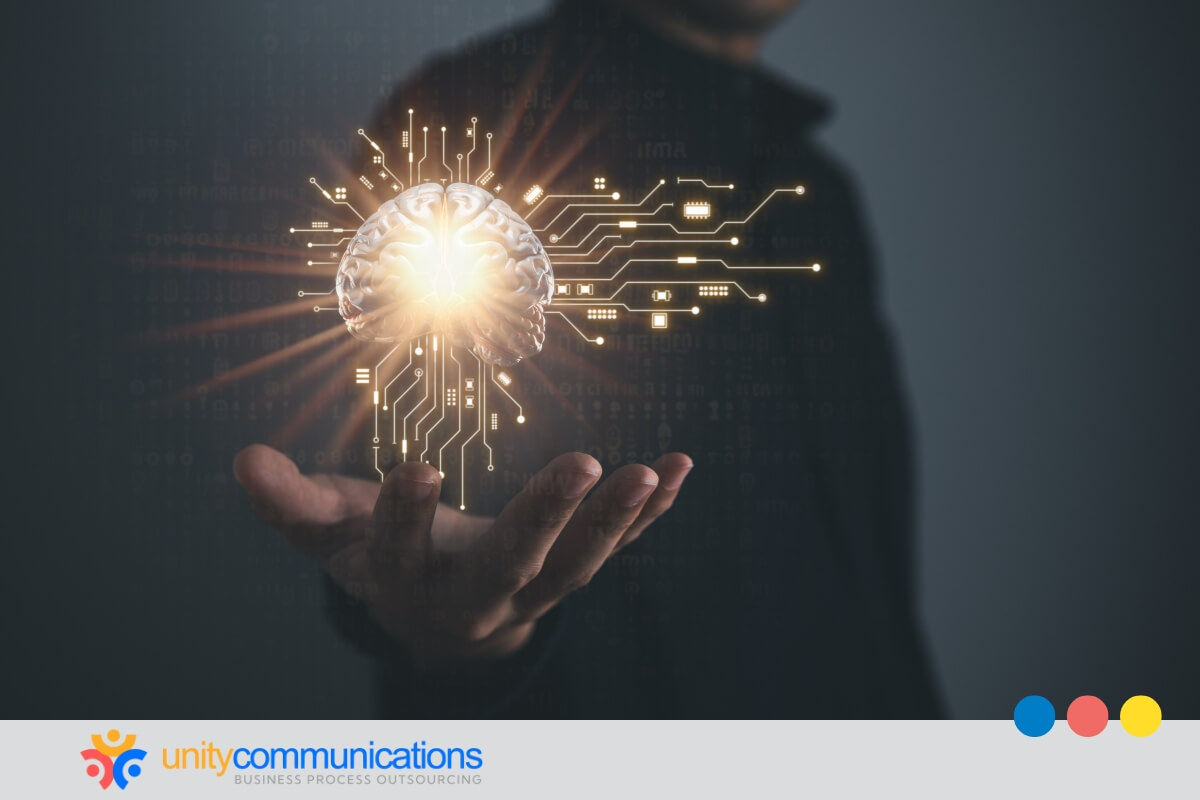
Chatbots were a crucial first step in automation, providing quick and straightforward responses to routine inquiries. However, as customers expect personalized, proactive, and context-aware support, AI agents have become a more intelligent and capable solution.
Unlike chatbots, AI agents can interpret intent with greater accuracy, adapt to complex scenarios, maintain context across conversations, and execute tasks seamlessly. This is the real difference in the AI agent vs. chatbot debate.
The choice between these two technologies ultimately depends on your business objectives. Chatbots excel for basic customer service automation, while AI agents unlock enterprise-wide transformation through autonomous intelligence and action.
Contact our team today to discover the ideal AI solution for your organization’s specific needs. Let’s connect.

